Who’s Leading The Revolution In Tech Products? You Might Be Surprised.
 – Tina Berres Filipski
– Tina Berres Filipski
Some 20 years ago, personal tech products made their promo industry debut and distributors and their clients have been hooked ever since. Today, the demand continues to soar. In 2021, distributors sold more than $906 million in tech products, making the category one of the top-six best sellers in promo, according to the industry’s annual sales volume study conducted by Promotional Products Association International.
As popularity rises, staying ahead of the next big thing in personal tech products is no easy feat—but it’s one of several areas where industry leader PowerStick.com excels. Ottawa, Ontario-based supplier PowerStick is the only company that designs and manufactures portable chargers in North America, and its full line includes Bluetooth® speakers, innovative tech products for the home and office and phone accessories.
In a recent interview, Nigel Harris, CEO, and Wi11 Lieu, director of product design, reveal what goes into designing and building the highest-quality tech products and the trends and new products distributors should keep an eye on in the coming months.
Where do you and your team get inspiration for new products?
Nigel Harris: We have in-house teams in engineering, industrial design, marketing and production—we cover all aspects of the process. Our products fill a need in people’s lives. So, when we are out somewhere and experience a situation that creates a need, we’ll come back, talk about it and discuss potential solutions. We also look at tech blogs for innovation and read product reviews. I also like stopping in airport gift shops for ideas. They often have little gadgets there that we’d never thought of.
Will Lieu: We look for pain points in our lives—like somebody drops their phone, so we came up with the PhoneNet [a flexible, silicone phone wrap], or their pockets are full so we put their wallet on the back of their phone with the Clutch [a combination hand strap and cardholder].
Harris: One of the most expensive pieces of real estate is the back of the phone so we’ve created a number of products that fit there to help carry your phone and your credit and bank cards.
How is personal technology changing and what is driving it?
Lieu: It’s ever-changing and much of that is because of the pandemic. For example, we’ve started designing more products for the home, such as the Sous Chef.
Harris: The Sous chef is a classic example of finding opportunity in a situation. With more people working from home, distributors are looking for mid- and high-end gift items that could be drop shipped for use in the home. Until recently, we had not designed any products for the kitchen. The Sous Chef is five products in one: a Canadian maple cutting board, scale, timer, phone or tablet stand and a knife sharpener. It’s a multi-purpose tool—that’s the kind of technology that we are offering. Not just a speaker, but a speaker and a charger. Or a speaker, charger and ear buds, all in a single unit. Multi-functional technology is the future.
What other trends are you seeing on the horizon for personal tech products?
Harris: We want to know what’s hot and what’s coming but we also look at it from the promo world. We have to make sure that any product we create and offer is functional for everybody—male and female, young and old. Everybody has to be able to pull it out of the bag and say, ‘That’s cool, I can use it.’ Our criteria is, “Is it cool? Is it new? Is it unique enough that we won’t run into a lot of other similar products on the street when we release it? And, of course, brandability is a very key component of our design.
Lieu: Trends that we are seeing now are virtual reality, augmented reality and products that are efficient and make our lives easier. Those are the things that will always be trending.
Harris: When we started out doing portable power products, we assumed people would use them at the office, at home and when they went away for the weekend. Now the work-from-home paradigm has come into play so the product has to be useful at home, at the office and everywhere in between. We want people to stop in at Starbucks, put our product on the table and have someone ask, “That’s really cool! Where did you get it?” That benefits us and the people whose logo is on the product.
In a nutshell, what is the process and time frame for designing and developing a new tech product?
Harris: It starts with someone coming up with an idea. I’ll call in Will and John Zhu, our director of engineering, and ask if we can make that idea into a product. If so, Will makes a 3D drawing or print and John determines if we can make the product. We then determine if there’s market potential, what it would take to put it together and what we could sell it for. If all systems are go, we’ll produce a prototype. If we like it, we’ll get a mold done. The mold takes three to four weeks and we’ll build a printed circuit board at the same time. In two to three months, we’ll have the product completed. Our next step is to produce 500 samples to send to distributors. Then we’ll do a round of 5,000-10,000 products to satisfy the orders received.
Our team can move fast. For example, the day before we were due to be locked down because of the pandemic in March 2020, we received email from a distributor with a picture of a touch tool. I showed it to Will and John and they both said we could produce it. Our engineer team said we should produce it in plastic ABS, not metal, so we could do it more quickly, and we decided to forego the prototype. We used three molds to produce 15,000 products per day, and had 50,000 of our TouchTool in three weeks. We sold over five million of those products.
When a distributor requests a product on the leading edge of personal technology, what do you suggest?
Harris: For the lower price point, I like the Bluetooth® tracker. It’s very cool and techy, the client’s brand really shows up nicely and it’s reasonably priced. At the high-end, I’d suggest Sous Chef or one of our Silken kits that includes a speaker, a charger and a couple of accessories in a nice white magnetic box with a custom foam insert. One of our most popular products now is the PowerStand—a tall-position stand that wirelessly charges phones. While it’s a handy item to increase productivity, it also charges, so it has an added benefit.
What new products can distributors look for this year?
Lieu: On the drawing board is the DeskShield. It’s a vegan leather desk pad that protects your desk, and we’ll also have a version that wirelessly charges your phone. It will be available in July in cognac and black.
Harris: We are also working on a new Alto speaker with built-in ear buds. It will be out in July. Also, distributors have been asking us for trophies, clocks and awards. We thought, ‘Why not make a high-end award that also has a purpose?’ So, we are creating ClearCharge—an acrylic wireless charger with a high polish, like fine crystal. It’s smart, functional, very luxurious and will have etched branding—like crystal. It will come with a USB cable in a premium white box with a blue pillow—very high end. And it will be at a price point that will be palatable for a lot of people. Look for it at the end of July.
What’s your biggest challenge or advantage in developing and designing your own products?
Lieu: Our challenge is making sure we always reach our criteria of quality, and produce something that represents our brand appropriately.
Harris: When we talk about our made-in-Canada chargers, we talk about our lifetime warranty. If anything goes wrong, we’ll fix it with the original branding. This warranty gives us a huge competitive advantage and shows we understand what we put into the product and that we stand behind it. If you are buying a product to resell from China, you basically have no idea what’s inside it. You don’t know if it’s overheating or leaking. Our products are all certified for safety.
Also, we release products 12 months a year—all year round. Each product has a different timeline, and we release 15-20 new products on average every year. They are all fresh and new. It takes incredible resources to be able to develop our own products. We kiss a lot of frogs. Not all of them turn into princes but most of them do.
Ideally, look for six hours or more of playtime and speakers with a passive radiator, a component that gives the speaker system the comparable performance characteristics of a much larger system. Also, look for a new feature, True Wireless Stereo technology (TWS), that lets the user pair two of the same speakers within Bluetooth range for true stereo sound.
When helping your client select speakers, follow the same safety protocols as for chargers, including buying from a reputable supplier you trust and checking the supplier’s website to ensure the product has been tested and certified.
Finally, yours and your buyer’s confidence in the supplier and its products should reflect their warranties. If the warranty offered is just three months, stay away. If the supplier offers a lifetime warranty with original branding, they are truly confident in the quality and safety of their products and you can be too.
PowerStick.com is the only company designing and manufacturing its own portable chargers in North America. See the full product line of personal technology products, including chargers, speakers, phone accessories and home and office products, at powerstick.com.and you can be too.






